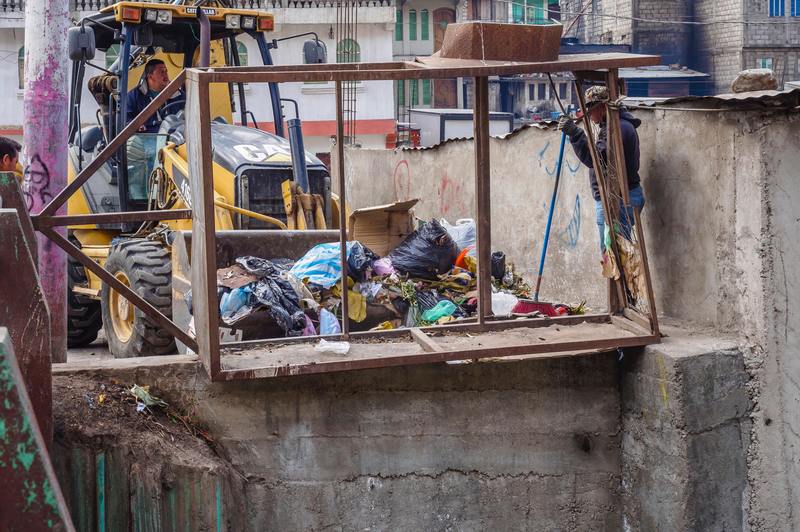You must follow the container instructions and state laws. That’s how you will know how to dispose pesticide containers after pest control.
Pesticide containers aren’t like usual garbage; you can’t just toss them into the recycling bin for disposal. These containers have toxic chemicals, so there are specific guidelines you must follow when you’re finished with them.

Pest control companies are usually in charge of this task, but it’s also essential for homeowners to know the proper steps.
These three pesticide wastes need disposal:
- Unused pesticide in its original container
- Extra pesticide mixtures
- Empty pesticide containers
You must learn how to dispose of these chemicals properly. This article will guide you on the proper steps to follow.
What Happens After Exposure To Pesticides?
There will likely be a residue after a pest control session, and people may come in contact with it. You might wonder, is pest control safe for humans? Read this guide to find out!
These chemicals target insects, weeds, and bacteria, but they can have harmful effects on humans, too.
Pesticides can have varying effects on your body based on their strength and your immune system.
- Allergic effects – These are effects that have instant symptoms. They are the easiest to remedy.
- Acute poisoning – These effects show after short-term exposure to the pesticide. The symptoms of this poisoning include vomiting, headaches, dizziness, fatigue, and eye or skin irritation.
- Chronic poisoning – These symptoms show after continuous exposure to the chemicals. They include weight loss, frequent headaches, fatigue, and loss of appetite.
There may also be long-term issues like immunity and reproductive problems.
Now you see why it’s essential to properly treat and dispose of chemicals after a pest control session.
How To Dispose Of Unused Pesticide
Sometimes, you might have extra chemicals from the pest control treatment. It’s always best to follow the measurement instructions on the container to avoid this.
However, if there’s nothing you can do about it; there’s a proper process you must follow to dispose of it properly.
1. Check if others need it
One of the best ways to deal with unused pesticides is to use up as much as possible. If you have chemicals left over, try asking a neighbor if they need them for a similar pest problem.
Giving the chemicals to others who need it reduces waste and the chances of the chemicals contaminating the surroundings.
Put the pesticides back in their original container, these are built to withstand the chemical’s strength. You must ensure that your neighbor knows how to apply the pesticide to avoid any problems.
2. Dispose of the chemicals in a safe way
If no one can use up your chemicals, you must securely dispose of them. Contact your local solid waste management office to receive proper disposal instructions.
Never pour the chemicals down the toilet, street, sink, or street drain. These chemicals could contaminate your area’s water system.
How To Dispose Of Pesticide Containers
If you use up all your chemicals, you’re left with the container. You must follow the proper procedures with this empty bottle.
Do not reuse the receptacle for other things, especially food or drinks. There might be traces of the chemicals left inside.
It’s recommended to “triple-rinse” the container before bringing it to the proper disposal area. This process will remove any harmful residue left.
Step-By-Step Process How To Triple-Rinse An Empty Container
Triple-rinsing can make the container safe for disposal. You will need water, a sprayer, and protective equipment.
Always use gloves, a mask, and goggles when handling these toxic chemicals.
Step#1. Empty the container
Pour the remaining pesticide contents into a sprayer. Remember to use your protective equipment while doing this.
Step #2. Rinse the container
Fill ¼ of the pesticide container with water. Close it, and shake the receptacle for 30 seconds.
Pour this rinse water into your sprayer. Repeat this process two more times while shaking the receptacle in different directions.
After washing the inside twice, rinse the outer part over the spray opening.
Step #3. Dispose of the container
You may throw the cap in the regular garbage bin, but the bottle must go to a special collection facility.
It’s recommended to put holes in the bottle to damage it. This step will prevent people from accidentally reusing the container.
Step #4. Use the rinse water
Use the sprayer to apply the rinse water to the pest control areas. This step will provide additional protection and will keep the chemicals contained.
Now you can rest easy knowing you’ve disposed of these chemicals properly.
Conclusion
Sometimes, the thought of all these toxic chemicals makes people wary of pest control; but this treatment is essential to homeowners and farms.
This treatment protects crops and prevents infestations at home. Read this article to learn more reasons why is pest control important.
Pest control has several benefits, but you must be careful when handling toxic chemicals. Preventive measures after treatment for the places and containers can keep you safe from poisoning.
You must learn how to dispose pesticide containers after pest control to keep yourself safe. Learn how to triple-rinse and keep your local collection facility’s number for reference. All these tips make you a responsible pesticide handler.
